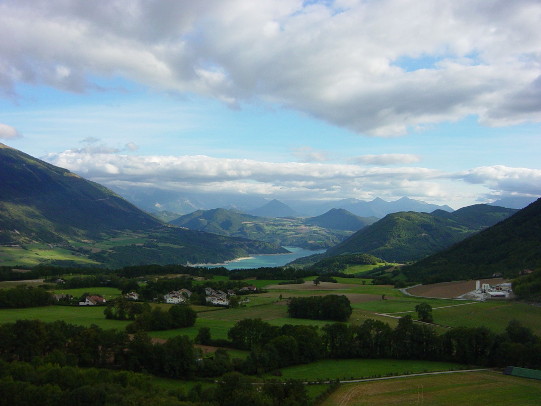
Situated in the south of Grenoble (530.000 habitants) on 650Km², Trièves is composed of 29 communes (9.500 habitants) which are regrouped into 3 communal communities (CC Clelles, CC Mens, CC Monestier de Clermont). These 3 communities are themselves grouped by a regional land-use planning confederation, the «Syndicat d’aménagement du Trièves» or SAT. Moreover 12 of the communes on the west side of the territory are situated in the regional Natural Park of Vercors.
Geographically, Trièves is limited by natural bounderies being : The agglomeration of Grenoble in the north, Vercor’s cliffs in the west, Dévoluy’s cliffs in the south-east and Drac’s cliffs in the east.
Social and economic activities
The region is involved in an european project (FEDER), which promotes ecological tourism and special needs tourism.
540 businesses and shops, 981 jobs. unemployment rate : 7,9% at the end of 2008 (french national rate: 9,6%) Evolution of employment over 10 years: + 59% representing 363 jobs ; working population : 4200 inhabitants. Agriculture 336 agricultural workers and co-workers, of which 187 are professionals.13% of the population (1043 people) represents the «farming-family».
Since 2003, 23 young farmers have settled in Trièves, which is considered as an attractive, sustainable and high quality product region.
The yearly milk-production is about 13 millions of litres.
The Forest
The total surface of the Trièves’ wooded area is about 26 833 ha.
These forests are split into public (14 560 ha) and private (12 273 ha) forests. The public forest, managed by the ONF (national forest office), provides important financial resources to the communes and to the state. The private forest is more extended and also less efficient. It is also much more fragmented and less exploited.
Trièves’ forest is composed of a majority of pine trees. The Sylvester pine-tree is the most common species. Above 800m altitude, at the southward slope, a natural regeneration of fir trees overtakes the pine-population.
On the east-side of the territory, the fir-trees occupy 4500 ha. The forest management has contributed to the development of fir forests, to the plantation of the European black pine and to the creation of a forest infrastructure.
Unfortunately, this management encounters also difficulties such as
Based on these facts, Trièves decided to create a forest charter in 2005 in order to develop and to structure the forest-wood-sector.
Started 5 years ago, one of the most important actions is the establishment of an energy-wood-sector due to the construction of a wood-chips-service-centre and 3 communal wood-fired-boiler with district heating systems.
Among the renewable energies, wood-energy represents a very attractive perspective for the collectivity and the local development.
Therefore, the wood-sector and specially wood-energy plays an important role in
Energy
The electricity consumption of the Trièves is estimated at 9500*30,23 = 287 GWh/year.
Furthermore, many private and communal hydraulic micro-power-stations are established on the territory.
Moreover, the SAT is engaged in sustainable development-programs in relation to an efficient energy-control such as :
Development of other renewable energy biomass exploitations
In view of the important place of agriculture in our territory, it seems to be evident to implement this sector in future energy and environmental projects.
Today, a new issue to be considered for Trièves may be the installation of small biogas power stations on farms.
This type of project has been considered for a number of years, however, it has not given rise to any implementation for the time-being. The SAT is therefore particularly motivated to participate in this domain with all the BioRegions partners over the coming three years.